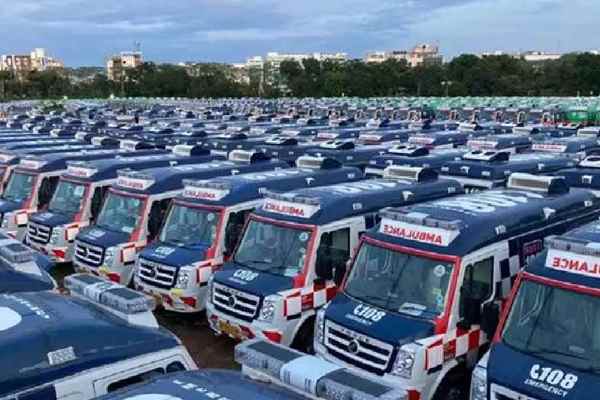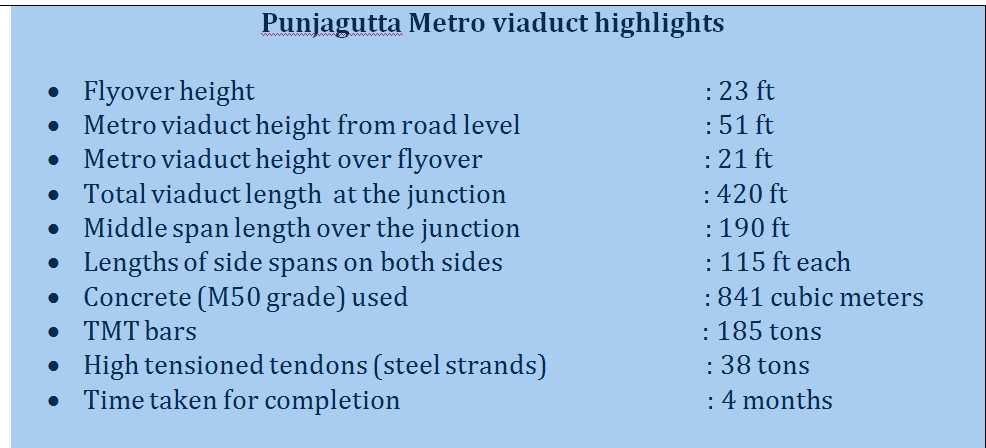Hyderabad Metro announced the successful completion of toughest job in the entire stretch of metro line laying, the viaduct at Punjagutta junction.
Of the 85 odd traffic junctions in the city which needed to be crossed by the Metro Rail viaduct, which is like building 85 flyovers, construction of Metro Rail viaduct over Punjagutta flyover proved to be the toughest. Being a busy location in the heart of the city with an already existing flyover, high volumes of traffic in different directions and the need for accommodating higher future traffic volumes posed several engineering challenges in the design and execution of the Metro viaduct at Punjagutta.
As already Punjagutta flyover was 23 ft high, the Metro viaduct was planned to cross it at double elevation at a height of 51 ft. from the road level. To allow future growth of traffic volumes, the central span over the existing flyover was designed as a 190 ft long span totally supported by high tensioned tendons (high strength steel strands) which are anchored to adjacent spans of 115 ft each on both sides. Thus a 420 ft long double elevated viaduct was planned as a three span in-situ construction.
without stopping the traffic of any direction (Banjara Hills-Begumpet direction traffic and vice-a-versa; Ameerpet-Khairatabad direction traffic and vice-a-versa) even for an hour, ground supported staging with wide gaps in between was devised, leaving enough carriageway for traffic flows at the road level and over the flyover during the construction period. In view of heavy traffic flows in all directions and possibility of a heavy vehicle hitting the ground supported staging, extreme precautions were taken to deeply anchor the support structures to the ground. Two layer protection with safety net was provided to prevent fall of any materials on the road users.
To give a beautiful shape and add aesthetic value to the viaduct structure and also to provide the required clearance over the existing flyover, arch type design was adopted for the viaduct. As the headroom available from the top level of the existing flyover to the bottom part of the Metro viaduct is only 21 ft, special type of shuttering and girder arrangements by restricting them to only 7.5 ft height was designed to get enough clearance (height) over the flyover for allowing vehicular movement during the construction stage. After carefully arranging the support staging in such a manner, concreting of the viaduct, positioning and stressing of tendons, arrangement of bearings and removal of support shuttering were all carried out in nine stages over a period of four months. The final product is an iconic Metro viaduct majestically crossing the existing flyover at Punjagutta and showcasing L&T’s engineering skills and talent. Appreciating the aesthetics of the sleek structure, the CM stated that Hyderabadis would surely be proud to see and enjoy the simultaneous movement of road vehicles at the road level and over the flyover and of the Metro trains on the viaduct.


































